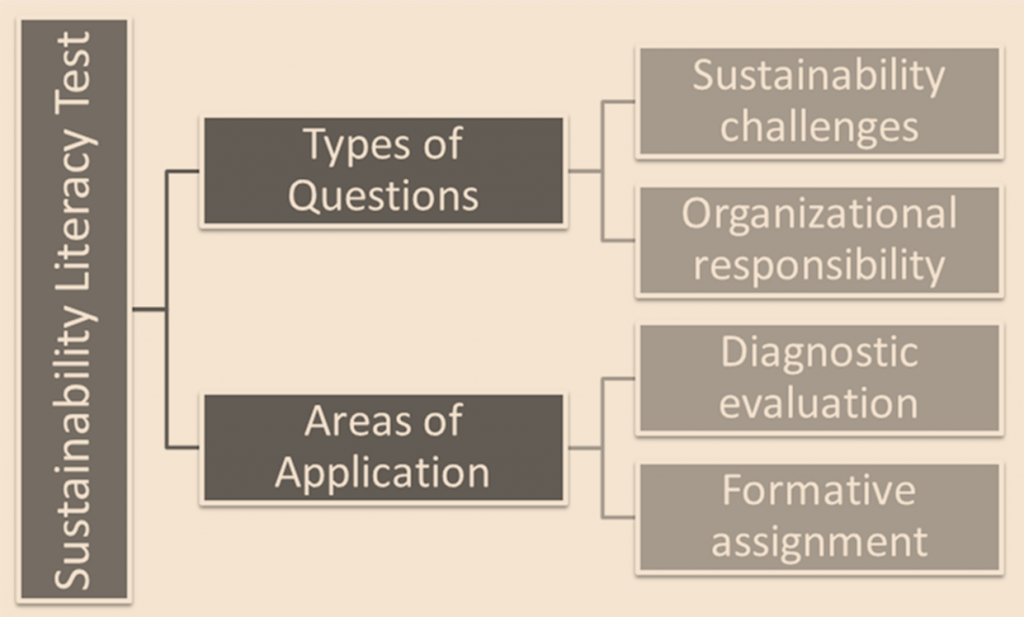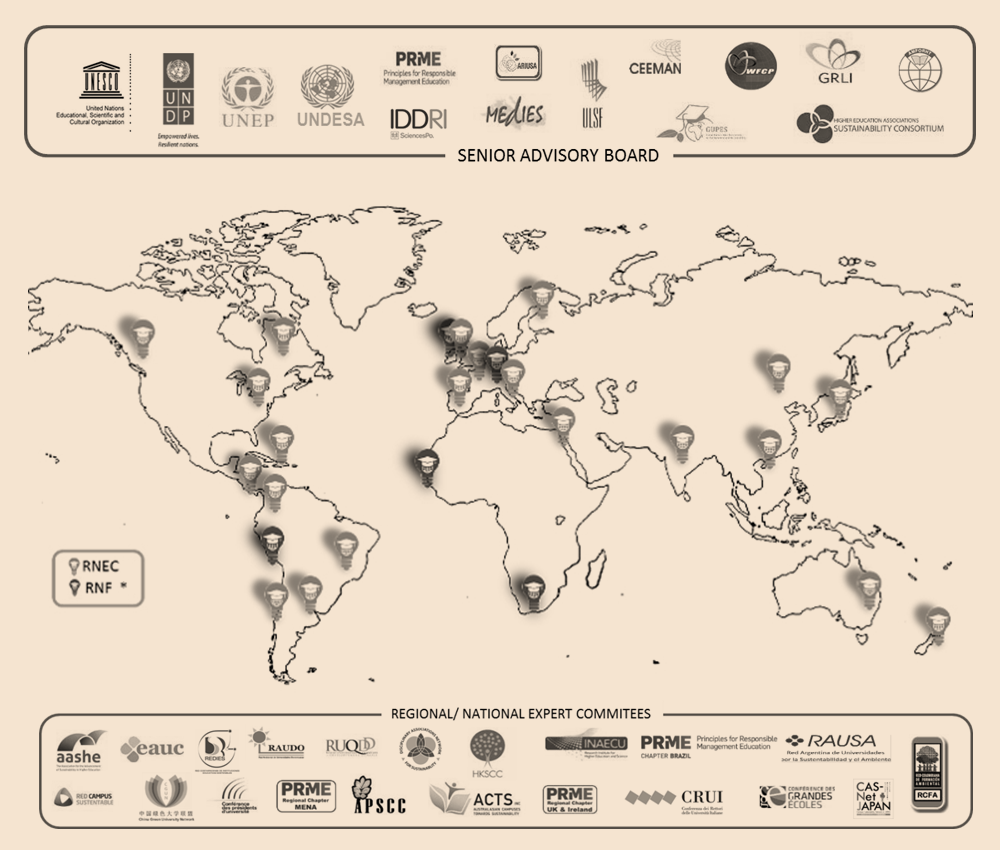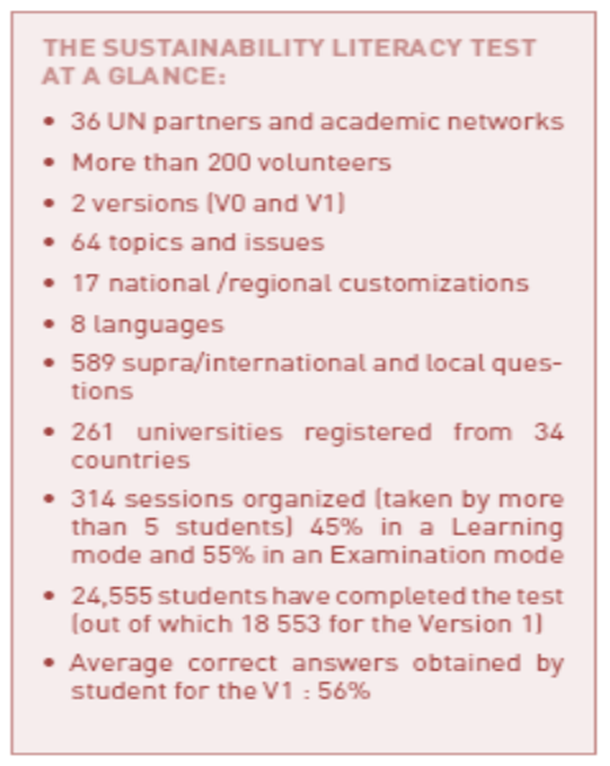HOW TO Assess Sustainability Literacy in Higher Education
Aurelien Decamps (Kege Business School)
Jean-Christophe Carteron (Kedge Business School)
Abstract: In the context of Education for Sustainable Development (ESD), a major concern for Higher Education Institutions (HEIs) is to deliver a sufficient level of knowledge on sustainability to their graduates so they can be aware of these fundamental stakes when they take their decisions. How can HEIs be sure they are producing sustainability literate graduates? The Sustainability Literacy Test is an open tool dedicated to this objective. Developed by academics and practitioners and endorsed by multiple UN agencies, this test assesses a minimum level of knowledge on sustainable development. After one year of existence, 261 universities have registered to use the test in 34 countries and almost 25000 students have already taken the test. This contributes to create a dynamic for the integration of SD in higher education around the adoption of this tool. It also produces a first snapshot of sustainability literacy in higher education worldwide.
CONTEXT
The UNESCO World Conference on Education for Sustainable Development (Nagoya, Japan, in November 2014) has celebrated the end of the UN Decade of Education for Sustainable Development (DESD) and set the agenda for ESD in the decade to come. The rationale of the DESD can be summarized as follows (UNESCO, 2007):
“The principle of using education – formal, non-formal and informal – as an effective vector to bring about change in values, attitudes and lifestyles to ensure a sustainable future for sustainability and, consequently, for sustainable development. The DESD strives to achieve these results through the following objectives: facilitate networking, linkages, exchange and interaction among stakeholders in ESD; foster an increased quality of teaching and learning in education for sustainable development; help countries make progress towards and attain the Millennium Development Goals through ESD efforts; and provide countries with new opportunities to incorporate ESD into education reform efforts. “
The UN PRME plays a major role in ESD, highlighting the role of business education as the key to creating responsible managers, as expressed by Manuel Escudero in a concept paper (cited in Carteron et al., 2014): “the academic sector can play a strategic role as change agents, educating the managers of today and tomorrow, incorporating the values of responsible corporate citizenship into their education activities”.
The Rio+20 Conference confirmed sustainable development as the international framework for action and cooperation. One of the major outcomes of the Rio+20 Conference are the Sustainable Development Goals, which reinforce the common future and responsibilities of our communities. Regardless of the content of SDG’s to be defined in 2015, it was also a major turning point in the perception of the role education can, and should, play in the construction of a sustainable world with the Rio Declaration for Higher Education (Higher Education Sustainable Initiative, HESI). Chancellors, Presidents, Rectors, Deans and leaders of Higher Education Institutions (HEI) and related organizations, acknowledged the responsibility that they bear in the international pursuit of sustainable development. They agreed to teach sustainable development concepts, encourage research on sustainable development issues, green their campuses, support sustainability efforts in their communities and share results through international frameworks.
In this context, a major question has been raised: can universities be sure that they are producing sustainability literate graduates? The “Sustainability Literacy Test” is a tool created by the academic community to evaluate their students’ knowledge in these critical areas. It assesses the level of knowledge in economic, social and environmental responsibility for higher education students; applicable all over the world, in any type of HEI, for students studying in all fields and at all levels (Bachelors, Masters, MBAs, PhD).
CONCEPT
In order to ensure that they offer their future graduates an education that enables them to be aware of the critical stakes of sustainable development, it seems logical that, in the long run, the best institutions could ask students to have a minimum level of knowledge in the field of sustainable development (SD). The Sustainability Literacy Test is a tool dedicated to this objective.

What type of questions?
All of the questions from this assessment tool are designed to ensure that future graduates have basic knowledge on sustainable development, covering both individual and organizational responsibility. The scope of this assessment tool focuses on two key areas:
- Questions about the current challenges facing society and the planet i.e. general knowledge on social, environmental and economic issues, basic understanding of the earth system e.g. water and carbon cycles, greenhouse effect etc.
- Questions on an Organization’s responsibility i.e. questions about organizational practices for integrating social responsibility in their activities and questions on the responsibility of individuals as employees and citizens.
A Multiple Choice Question (MCQ) format was chosen to make the test easier to use and implement worldwide. 50 MCQ’s are randomly selected among a wide range of questions from a question bank. Out of these 50 questions, 30 are focused on Supra/International level issues (same worldwide) and 20 are focused on national/regional issues specific to the local context (i.e. local regulations and laws, culture and practices, etc.).
To ensure that this tool remains relevant, the questions are updated yearly, and the local questions are produced by local networks all over the world made up of academics, practitioners, the corporate world and civil society (RNEC, Regional/National Expert Committees). Currently the version 1 of the test has been customized in 17 different countries / regions (and 5 other RNEC are finalizing their sets of questions).
Questions are based on verified and reputed sources that are subject to a broad consensus in the community of researchers and practitioners in the field (international texts and reports, UN conventions, specialized national agencies, etc.). A strict review process guarantees the quality and reliability of the assessment tool. A Senior Advisory Board (SAB) with representatives from international organizations and UN agencies check the local and international set of questions with a “review grid” and give a feedback to the general secretariat on each question (Accepted / Rejected / Need clarification). The questions cover the following scope:
- Founding principles of sustainable development including basic definitions (e.g. sustainable development, corporate social responsibility, socially responsible investment, social entrepreneurship, etc.); trends and key figures of global issues covering environmental, social and economic dimensions.
- Corporate Social Responsibility structured by core issues addressed in ISO 26000 (7 core subjects and 37 core issues.

What type of assessment?
This test was primarily designed to assess students’ knowledge before graduation and has a summative function when evaluating student learning. The test gives the average score obtained by students in each topic area (e.g founding principles of SD; trends & key figures in environmental, social and economic issues, core subjects of ISO 26000). The final score represents the percentage of correct answers per topic.
This structure allows students to see their performance in each topic area and to benchmark themselves against other students in their own program, university, country or even worldwide. It also allows examiners and institutions to have a global overview on the sustainability knowledge of their student population by topic area. Institutions can theoretically use the test as requirement for awarding degrees or as part of a grade in a course or program. In this case, the test can be passed in an “examination mode” (limited time, no access to internet, proctored exams, etc.)
The test can also be used as a diagnostic evaluation. Institutions can use it at different stages in the curriculum or as an entry/exit exam in order to monitor progress or successful learning. This can help schools make changes and improvements in their pedagogy and curriculum design based on strengths and weaknesses of their students.
The test can also be used as an assessment tool with a formative function. Universities can choose to organize sessions spread over 2 weeks maximum in a “learning mode”. Thanks to the sources and references given in the questions (mention of UN references, name of reports, legislative text, etc.), the test can be an excellent tool to raise the sustainability awareness and knowledge of the students.
Application
If the context of ESD highlights the role of HEI to engage their future graduates in a more sustainable path, measuring the impact of ESD initiatives remains critical. The Sustainability Literacy Test can be a tool (among others) to estimate a part of this impact by focusing on higher education graduates’ level of knowledge on sustainability and CSR fundamental issues. Supported by a number of UN institutions, and using a framework based on UN protocols (e.g., High Level Committees, Regional Expert Committees), multi-tier agencies have agreed to validate and promote the test worldwide. The test aims to become a standard assessing a minimum level of knowledge in sustainability for every graduate from every HEI worldwide.
The results of the first version of test after one year of existence have been presented on the occasion of the UNESCO World Conference on Education for Sustainable Development in Nagoya (see Carteron and Decamps, 2014). As of November 2014, 261 universities in 34 countries have registered to use the test and almost 25 000 students have taken the test worldwide (as mentioned in the figure below).
As mentioned before, the test can be used as an assessment in “examination mode” or as a learning tool in “learning mode”. Consequently, HEIs are free to use the test as an assessment tool, as a diagnosis tool to have a snapshot of the level of knowledge of their students at a specific moment, or as a learning tool. For the version 1, 55% of the sessions were organized in examination mode and 45% in learning mode: the average score for international questions (same for everyone worldwide) is 53% in examination mode and 59% in learning mode.

As the test is adopted by more and more institutions, it allows producing a first snapshot of sustainability literacy in higher education worldwide.
Of course, evaluating minimum knowledge does not guarantee graduates’ future behaviour. But setting up a process at planetary level will create a dynamic for SD integration in the strategy of our institutions. 17 pioneer higher education institutions are already making all their incoming students take the test, some are envisaging asking for a minimum score before conferring the diploma and others will use the test as a pedagogical tool to develop teaching and research programs that enhance their students’ awareness. Open, online and free of charge for universities, it will later be offered to firms, institutions and organizations and recruitment agencies.
The test also makes possible to examine meaningful data relating to student understanding of sustainability issues and to the impact of ESD initiatives. Researchers will be able to use the test to plot changes in different countries, regions and continents, and theorize more effectively on how the ESD initiatives might be advanced. Policymakers will also be able to use the research to guide the future priorities in education as a new generation of (hopefully) better informed undergraduates’ progress through our HEI system. Equally, those within HEIs – teachers, curriculum developers and program designers – will have data to work with to help them plan new modules, courses and programs.
Any HEI can register online (free and open) to use the test. Once the registration is checked by the general secretary, the responsible of the HEI receive login information to activate the account of the university and create examiners’ accounts. Examiners will be able to organize and plan sessions online for their students and to invite their students to register online to take the test during the chosen session. Examiners are usually heads of programs and/or specific degrees in the HEI, or professors who want to use the test during their course. Examiners can also create “trial session” for themselves to “test the test” and to have a visibility on the type of questions selected for the test.
Examiners can monitor the validation of the test by the students during the session. They have access to the results of each student (overall score and score per topic) at the end of the session. The responsible of the HEI have access to the results of all the sessions of his/her institution.
MORE
The Sustainability Literacy Test website: http://www.sustainabilitytest.org/fr/substainability_home
The Rio+20 Higher Education Sustainability Initiative: https://sustainabledevelopment.un.org/sdinaction/hesi
If your institution wants to use the test, please register here: http://www.sustainabilitytest.org/en/visitor/createUnivUser
The frequently asked questions are answered here: http://www.sustainabilitytest.org/en/faq
For more information, please contact us at one of the following email addresses: contact@sustainabilitytest.org, jccarteron@kedgebs.com, aurelien.decamps@kedgebs.com
REFERENCES
Carteron J.C., Decamps A. “Can Universities be sure they are producing sustainability literate graduates?”, One Year Report of the Sustainability Literacy Test, presented on the occasion of the UNESCO World Conference on Education for Sustainable Development, Nagoya (Japan), November 2014
Carteron J.C., Haynes K., Murray A. (2014) Education for Sustainable Development, the UNGC PRME initiative and the Sustainability Literacy Test: Measuring and Assessing Success, SAM Advanced Management Journal, vol79, 4, p.51-57
UNESCO (2007) The UN Decade of Education for Sustainable Development (DESD 2005-2014) The First Two Years. Paris.
